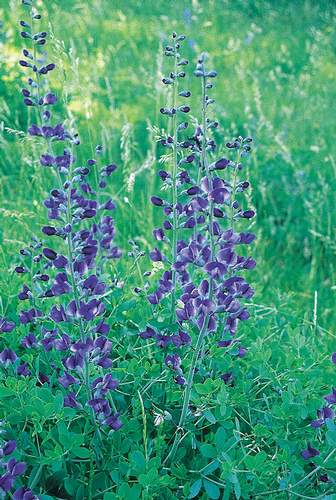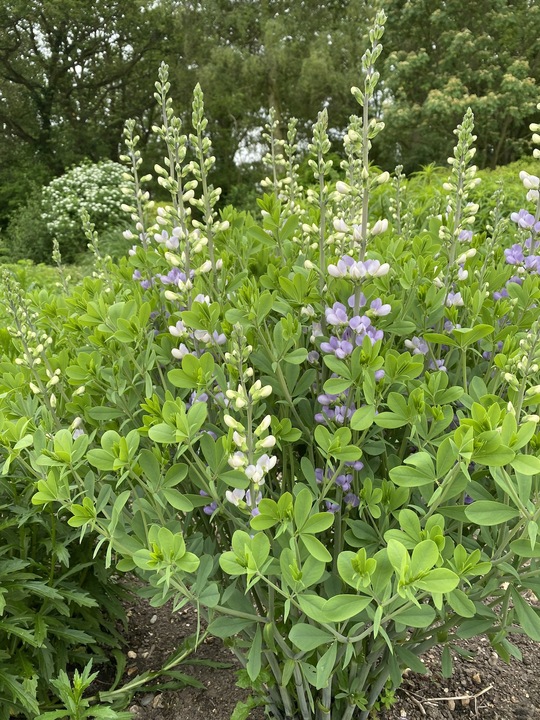

The genus name Baptisia comes from the Greek word bapto meaning "to dye". Stems with seed pods are valued additions to dried flower arrangements. Seeds rattle around in the blackened pods which were once popularly used by children as rattles. Flowers give way to inflated seed pods (to 2.5" long) which turn charcoal black when ripe and have considerable ornamental interest. It features purple, lupine-like flowers in erect racemes (to 12") atop flower spikes extending well above a foliage mound of clover-like, trifoliate, bluish-green leaves (leaflets to 2" long). If the seed pods are left over winter, they will produce little seedlings, but they are easy to pull out.Baptisia australis, commonly called blue false indigo, is an upright perennial which typically grows 3-4' tall and occurs in rich woods, thickets and along streambanks from Pennsylvania south to North Carolina and Tennessee.Wild indigo is used for infections such as diphtheria, influenza (flu), swine flu, the common cold and other upper respiratory tract infections, lymph node infections, scarlet fever, malaria, and typhoid. Trimming foliage after bloom helps maintain a rounded plant appearance, but you will miss out on the attractive seed pods which are great to use in dried flower arrangements. Overview Uses Side Effects Precautions Dosing Overview Wild indigo is an herb.


#Baptisia minor full
Its requirements are fairly simple: Full sun in average, dry to medium, well-drained soils.Spreads by underground rhizomes and typically grows up to 3-4 ft.Blooming in late spring to early summer, it is an extremely valuable addition to the garden and its seedpods help create lovely winter decorations.Recipient of the Award of Garden Merit of the Royal Horticultural Society and named ' Perennial Plant of the year' in 2010.If left untrimmed, the plant forms interesting seedpods turning deep black in the fall and persist into winter. When the flowers fade away, the lovely blue-green, trifoliate leaves remain neat and form a lovely backdrop for the other perennials in the garden. They last for about three weeks and attract butterflies, bees, and hummingbirds. Minor probably refers to the smaller size of this variety. In spring, this native to the North American prairies bears spikes of pea-shaped indigo blue flowers, resembling Lupines. Baptisia means to immersea reference to this plant’s use for creating dye, and australis means southern (not Australian), though I cannot find out what is southern about this species. Tough and durable, Baptisia australis (False Indigo) is an upright perennial with a long season of interest.


 0 kommentar(er)
0 kommentar(er)
